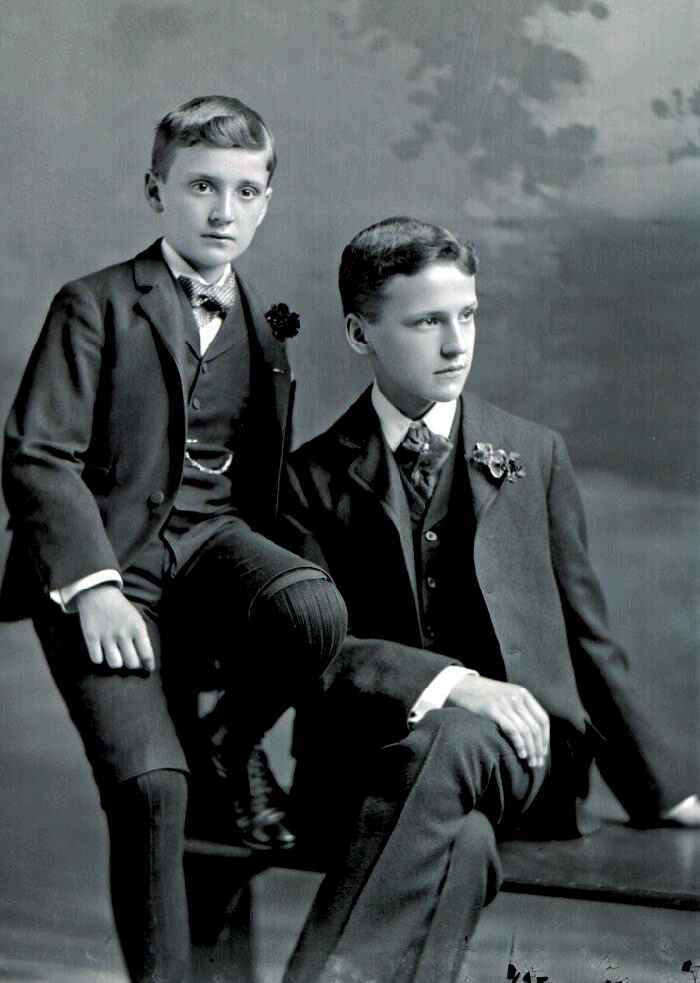

Figure 1.-- Here we have another professional protrait from Montreal (taken June 30, 1899, at one of the photographic studios in the city). The photo is simply entitled "Mrs. Ross's sons, aged 12 and 15" so we unfortunately do not have their Christian names. Both boys are very beautifully dressed for a formal portrait with elegantly cut three-piece suits with waistcoats, white shirts and ties.
|
Ross Brothetrs (Canada, 1899)
Here we have another professional protrait from Montreal (taken June 30, 1899, at one of the photographic studios in the city). The photo is simply entitled "Mrs. Ross's sons, aged 12 and 15" so we unfortunately do not have their Christian names. Both boys are very beautifully dressed for a formal portrait with elegantly cut three-piece suits with waistcoats, white shirts and ties. Notice the boutonieres in their lapels. The suits were age greaded with the younger brother wearing kneepants and the older brother long pants.
Family
We know nothing about the family at this time, other than the name Ross and that they lived in Montreal. The Ross boys obviously come from an affluent family in Montreal--probably one of Anglophone families that tended to have most of the power, money, and influence in a French-speaking city at the turn of the 20th century. One would expect these boys to be attending private schools in Montreal rather than the
public schools--very probably run by the Anglican Church--despite the fact
that the great majority of Montrealers were Roman Catholic. Ross is a Scottish
name. There were quite a few imigrants from Scotland to Canada. Scottish emigration began after the British victory over the French in the mid-18th century. (This was also the time when British policies in Scotland were forcing many Scotts to emigrate.) This family obviously did very well in Canada. Many Scottish families settled in Toronto rather than in
Montreal.
The Boys
The photo is simply entitled "Mrs. Ross's sons, aged 12 and 15" so we unfortunately do not have their Christian names.
Portrait
Here we have another protrait from Montreal. obviously taken at a professional photogreaphic studio.
Chronology
We know tht the portrait was takem June 30, 1899.
Clothing
Both boys are very beautifully dressed for a formal portrait with elegantly cut three-piece suits with waistcoats, white shirts and ties. Notice the boutonieres in their lapels. The suits were age greaded with the younger brother wearing kneepants and the older brother long pants.
Younger brother
The younger boy (aged 12) wears a bow tie with a white shirt which has cuff
links. He wears a watch chain on his waistcoast. His suit has knee pants
which he wears with wide-ribbed black stockings. One of the revealing details
here is the use of black round garters rather than hose supporters to hold up
the long stockings. The garter is exposed on his left leg and worn just above the knee. This seems to be somewhat unusual, since most boys of the period
wore hose supporters attached to waists rather than round garters, which were
considered more uncomfortable and more unhealthy since they tended to restrict
circulation. There was thus some disapproval of round garters because of the restriction of circulation. Older boys like the boy here may have preferred them to the hose supporters worn by younger boys and girls. Of course this is only a guess as we do not know if he specifically asked his mother for them. If they were worn, these garters were usually black (probably elastic) so that they would be less visible. The garters would show only if the boy were seated because the knee pants would cover them if he were standing. It is interesting that the garters appear to have been worn around the leg just above the knee and not further up on the thigh--which perhaps is an indication of the stocking length. Another Canadian boy, named Gustave Gagnon, also seems to be wearing black round garters in a portrait taken at about the same time.
Older brother
The older boy (aged 15) wears a suits very much like his brother's but with
long trousers instead of knee pants. His necktie is a silk foulard with a
pearl stick-pin rather than a bow. Notice the black cuff links on his white
shirt. Both boys' shirts would have detachable collars, starched stiff and
worn with collar pins in front and in back. The hair styles look surprisingly
modern for 1899 with traditional left parting.
Reader Comments
A Canadian reader writes, "Even if suspenders were popular in the United states, round garters were used to a large extent in Canada until the 1940s. The reason is simple: boys hated to be harnessed with a suspender and prefered round garters which gave a feeling of freedom. When inside overheated houses in winter, boys just rolled down their stockings to be more comfortable."
HBC

[Return to the Main ordinary bio page]
[Return to the Main Eton School page]
[Bangs]
[Long hair]
[Tunics]
[Caps]
[Collar bows]
Navigate the Boys' Historical Clothing Web Site:
[Introduction]
[Activities]
[Biographies]
[Chronology]
[Clothing styles]
[Countries]
[Bibliographies]
[Contributions]
[FAQs]
[Glossaries]
[Satellite sites]
[Tools]
[Boys' Clothing Home]
Created: 11:36 PM 1/24/2005
Last edited: 9:06 PM 9/25/2005



